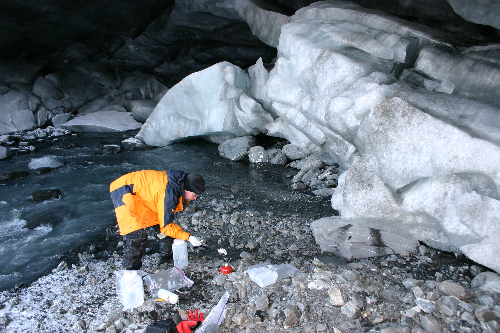Snow Science

Snow. You can play in it, drive in it, shovel it, melt it to drink it or irrigate with it, be killed by it, or dig a cave and survive in it. The snow program in the Department of Earth Sciences provides a foundation for understanding the distribution of snow (geography), mechanics of snow (physics, engineering), composition of snow (chemistry), variability of snow (statistics) and effects of snow (ecology, hydrology). As such, the snow program is a strong technical undergraduate program for environmental scientists or lawyers. It is also one of the best preprofessional programs in the world for those who will carry their interest in snow into a professional career.
The Snow Science option is based on a solid and broad-based foundation of course work from geography, mathematics, statistics, chemistry and physics. There are two emphases in the option. One focuses on biology and geographic information systems. One focuses on snow mechanics. The program prepares you to work in a variety of snow-related areas including avalanche forecasting, water resource planning, snow-melt hydrology, land-use planning, and snow engineering. You are strongly encouraged to consider a graduate degree in snow science to prepare for professional jobs, but such training is not always required.
In the Snow Science Option, you progress through a broad-based core of courses that includes introductory geology and geography, calculus, chemistry, physics, statistics, weather and climate, geomorphology, glacial geology, and mountain geography. In addition, you focus on one of two areas which prepare you to work in snow. One is snow biology and geographic information systems which prepares you in the area of biogeography, ecology and spatial analysis of factors important to snow distribution, the interaction between snow plants and animals, snow melt, and the spatial analysis of factors which influence the spatial distribution of snow or snow avalanche factors. The other emphasis is related to snow mechanics and prepares you to study the mechanics of snow as it relates to transportation, avalanche release, and the impact of snow on buildings due to loading or avalanche impact. The capstone course is snow dynamics and accumulation. These courses are integrated to build scientific problem solving skills throughout the four-year program.
If you are looking for graduate options in snow science, please visit the Snow and
Avalanche Laboratory web page here.
